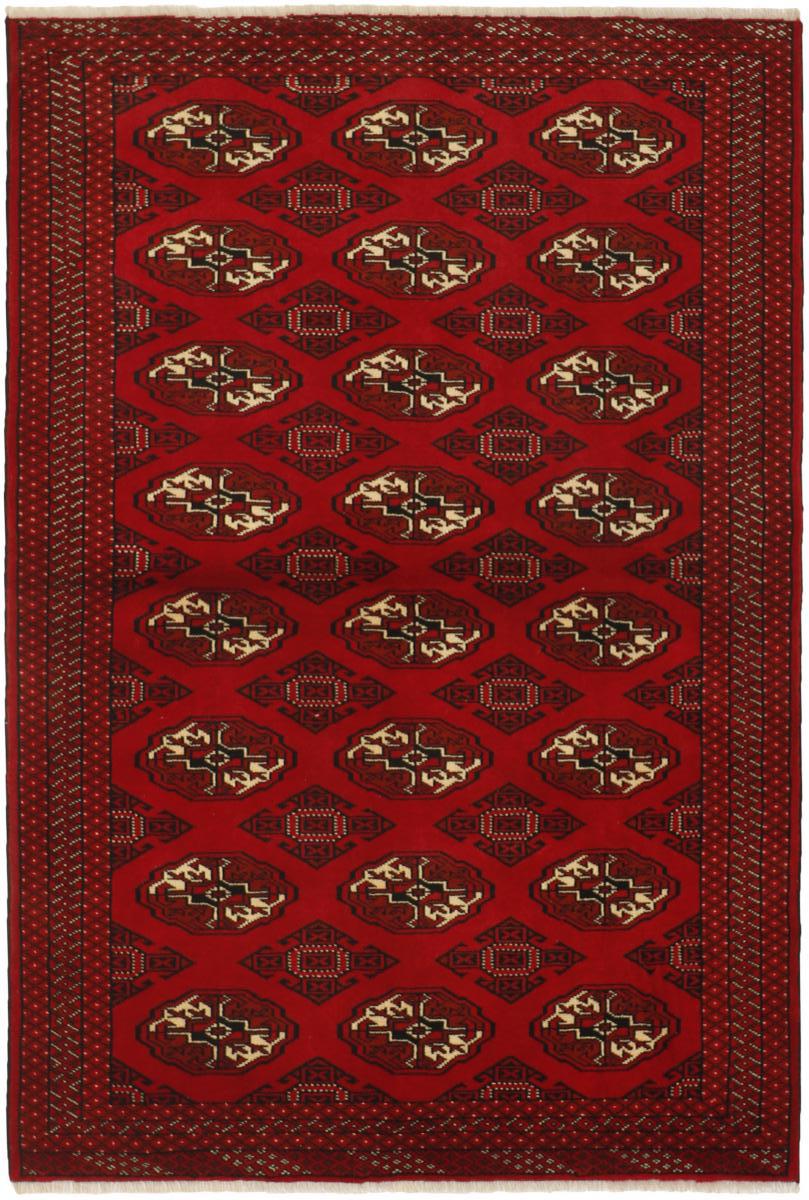Turkaman Rugs

Two typical Turkaman rugs in comparison
| Facts | |
|---|---|
| Type | Persian Rugs |
| Location | Turkmenistan |
| Typical Knot Density | 90.000 - 250.000 knots / sqm |
| Characteristics | Dark colours, octagonal patterns |
The term Turkaman rugs covers a whole range of carpets from different regions such as Uzbekistan, Turkemistan and Afghanistan. Carpets knotted by the Turkmen ethnic group include Bashir, Tekke and Yomut carpets. The names refer to various Turkmen tribes who developed and knotted their own designs.
A distinction must be made between traditional Turkmen rugs and industrially manufactured mass production based on Turkmen design from India and Pakistan. Like all nomadic carpets, the patterns are plain and simple.
and of coarser design. The predominant colour is red. An area-wide design is common..
Further Examples

Examples provided from a selection of over 230 Turkaman rugs by Nain Trading from the Speicherstadt in Hamburg. Nain Trading has one of the largest ranges of hand-knotted oriental carpets online.
Impressions from Turkmenistan

|

|
| Monumen Arch of Independence in Ashkhabad, Turkmenistan | Derweze Gas Crater, also known as 'The Door to Hell', Turkmenistan |
Location - where do Turkaman carpets come from?
Some of the 3-5 most famous places for the production of Turkmen carpets.
Main Regions
Probably the best known and highest quality carpets from the Orient. Nain, Isfahan or Tabriz are only some of the famous regions...
Read more
The country has a long tradition of rug knotting. Among the most famous are the Kahl Mohammadi rugs...
Read more
Pakistani Bukhara rugs made of strikingly shiny wool are one of the highlights of this country...
Read more
A region that extends over parts of Iran and Afghanistan and is populated by nomads...
Read more
Mostly warm and dark red shades in a simple design and of a somewhat coarser design...
Read more
Carpets from the area of the Caucasus mountains mostly in stronger colours...
Read more
Centuries-long tradition of carpet knotting, which is still widespread today...
Read more
They stand out clearly from other oriental carpets due to their old Chinese patterns and designs...
Read more






